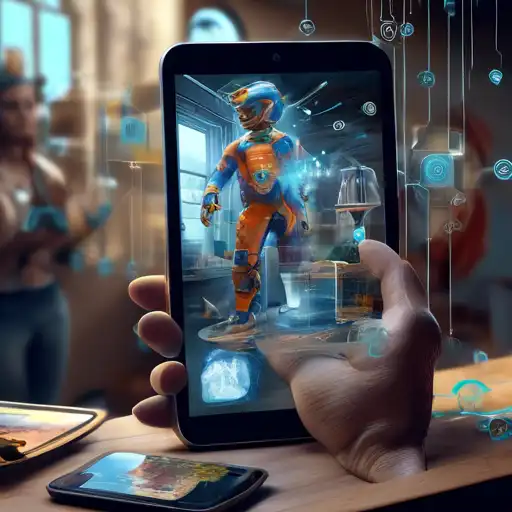Introduction to Augmented Reality
Augmented Reality (AR) is transforming the way we interact with the world around us, seamlessly blending digital elements with our physical environment. This innovative technology overlays computer-generated images, sounds, and other sensory enhancements onto the real world, offering a composite view that enriches the user's perception of reality.
The Evolution of Augmented Reality
From its early applications in military and aviation to its current widespread use in gaming, education, and retail, AR has come a long way. The advent of smartphones and AR glasses has made this technology more accessible than ever, opening up new possibilities for interactive experiences.
How Augmented Reality Works
AR technology relies on sophisticated algorithms and sensors to accurately place digital objects in the real world. By using the camera on a device, AR apps can detect surfaces and spatial features to anchor virtual content, creating the illusion that digital objects coexist with physical ones.
Applications of Augmented Reality
- Gaming: Games like Pokémon GO have demonstrated the potential of AR to create engaging, location-based experiences.
- Education: AR can bring textbooks to life, offering interactive 3D models and animations to enhance learning.
- Retail: From virtual try-ons to in-store navigation, AR is revolutionizing the shopping experience.
- Healthcare: AR assists in complex surgeries by providing surgeons with real-time, 3D visualizations of the patient's anatomy.
The Future of Augmented Reality
As AR technology continues to evolve, we can expect even more immersive and interactive applications. With advancements in AI and machine learning, AR devices will become more intuitive, offering personalized experiences that were once the stuff of science fiction.
Challenges and Considerations
Despite its potential, AR faces challenges such as privacy concerns, technological limitations, and the need for widespread adoption. Addressing these issues is crucial for the sustainable growth of AR technology.
Conclusion
Augmented Reality is bridging the gap between the digital and physical worlds, offering unprecedented opportunities for innovation across various sectors. As we continue to explore the possibilities of AR, it's clear that this technology will play a pivotal role in shaping our future.
